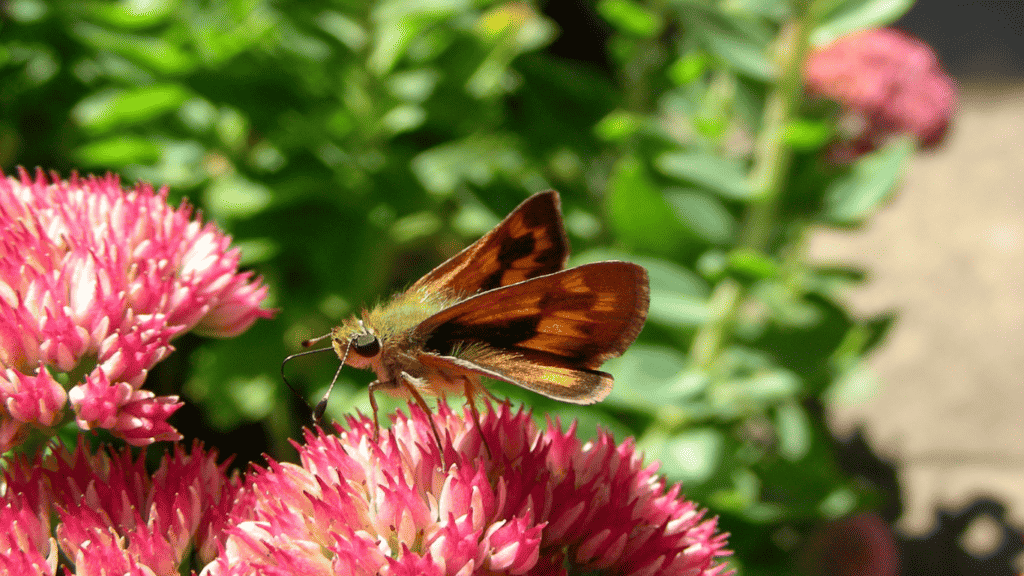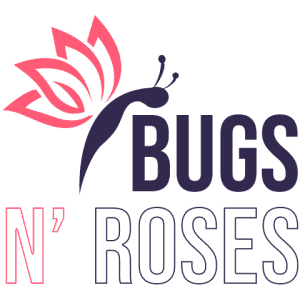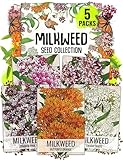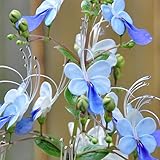Skipper butterflies are a diverse group of insects that are found all over the world. They are known for their quick, darting flight and their often colorful wings.
Skippers are attracted to gardens that offer a variety of nectar-rich flowers, as well as plenty of places to lay their eggs.
If you’re interested in attracting skipper butterflies to your garden, there are a few things you can do. First, plant a variety of nectar-rich flowers. Skippers love flowers like coneflowers, asters, and milkweeds.
You can also plant some native grasses, as skipper caterpillars often eat grasses. Finally, make sure your garden has plenty of sunny spots and some shady areas for the butterflies to rest.
Overview of Skipper Butterflies

Skipper butterflies are a group of insects that are part of the family Hesperiidae, which belongs to the order Lepidoptera. They are named for their quick, darting flight habits. Skippers are considered an intermediate form between butterflies and moths.
When at rest, most skippers hold the first pair of wings vertically.
The family Hesperiidae includes approximately 3,500 species of insects that occur worldwide. Skippers are found in a variety of habitats, including grasslands, forests, and wetlands.
They are most diverse in tropical regions, but some species are found in temperate regions as well.
The wingspan of skipper butterflies ranges from 20 to 100 millimeters, depending on the species. They have a stout body and a large head with big eyes.
The wings of skipper butterflies are usually brown or gray with various markings, such as spots or stripes.
Skipper butterflies have a simple life cycle, consisting of four stages: egg, larva, pupa, and adult. The eggs are laid on the upper part of the host plant’s leaves. The larvae feed on the leaves of the host plant and undergo several molts before pupating.
The pupa is usually attached to a leaf or stem of the host plant. The adult skipper butterfly emerges from the pupa and begins its life cycle again.
Some common skipper butterflies include the Dakota skipper, Essex skipper, Silver-spotted skipper, and Chequered skipper.
These butterflies are important pollinators and are also preyed upon by birds, spiders, and other insects.
Classification and Subfamilies
Skipper butterflies belong to the family Hesperiidae, which is one of the largest families of butterflies. The family is divided into eight subfamilies, each with its unique characteristics and traits.
Hesperiinae
Hesperiinae is the largest subfamily of skippers, with over 2,000 species. They are commonly known as grass skippers because of their preference for grassy habitats.
They are typically small to medium-sized and have a stocky build. Most species have brown or orange wings with darker markings.
Pyrginae
Pyrginae is the second-largest subfamily of skippers, with over 1,000 species. They are commonly known as spread-wing skippers because of their habit of basking with their wings open.
They are typically medium-sized and have a slender build. Most species have brown or black wings with white or yellow markings.
Heteropterinae
Heteropterinae is a small subfamily of skippers, with only about 100 species. They are commonly known as skipperlings because of their small size. They are typically brown or gray with darker markings.
Megathyminae
Megathyminae is a small subfamily of skippers, with only about 50 species. They are commonly known as giant skippers because of their large size. They are typically brown with darker markings.
Pyrrhopyginae
Pyrrhopyginae is a small subfamily of skippers, with only about 100 species. They are commonly known as firetips because of the bright red or orange tips on their wings. They are typically brown with darker markings.
Coeliadinae
Coeliadinae is a small subfamily of skippers, with only about 50 species. They are commonly known as metalmarks because of the metallic sheen on their wings. They are typically brown or black with white or yellow markings.
Eudaminae
Eudaminae is a large subfamily of skippers, with over 1,000 species. They are commonly known as dicot skippers because of their preference for dicot plants. They are typically brown or orange with darker markings.
Trapezitinae
Trapezitinae is a small subfamily of skippers, with only about 50 species. They are commonly known as flower-loving skippers because of their preference for flowers. They are typically brown or black with white or yellow markings.
Physical Characteristics
Antennae
Skipper butterflies are characterized by their short, hooked antennae with an enlarged club at the tip. The antennae are covered in scales and have a distinct coloration that varies between species.
The antennae play an important role in communication and mate selection, as males use their antennae to detect pheromones released by females.
Wingspan
Skipper butterflies have a relatively small wingspan compared to other butterfly species, ranging from 25-30 millimeters on average. Their wings are also proportionally smaller in relation to their body size.
Despite their small size, skippers are known for their strong and rapid flight, which allows them to dart quickly from one spot to another.
Coloration
Skipper butterflies are typically drab in coloration, with shades of brown, gray, and white dominating their wings. Some species have distinctive markings or patterns on their wings, while others have a more uniform appearance.
Life Cycle of Skipper Butterflies
Eggs
Skipper butterflies lay their eggs on the upper part of the host plant’s leaves. The eggs are globe-shaped and pale green in color. The female butterfly typically lays a single egg on each leaf. The eggs hatch into caterpillars in about a week.
Caterpillars
Skipper butterfly caterpillars are small and have a cylindrical body. They are usually green or brown in color, and they have a large head and a small tail. The caterpillars feed on the host plant leaves and grow rapidly.
They shed their skin several times as they grow, and each time they emerge with a new skin that is larger than the previous one.
Pupa
Once the caterpillar has reached its full size, it attaches itself to a stem or leaf with a silk thread and forms a chrysalis or pupa. The pupa is usually brown or green in color and hangs from the stem or leaf. Inside the pupa,
the caterpillar undergoes metamorphosis and transforms into an adult butterfly.
Skipper butterfly pupae usually take about a week to develop into adult butterflies. Once the transformation is complete, the adult butterfly emerges from the pupa, dries its wings, and flies away to find a mate.
That’s a brief overview of the life cycle of skipper butterflies.
Habitat and Distribution
Skipper butterflies are found all over the world, with the majority of species being found in tropical regions. They are often found in open areas such as meadows, fields, and prairies, but they can also be found in forests and other wooded areas.
In Europe, skipper butterflies are found in a variety of habitats, including meadows, grasslands, and forests.
Some of the most common species found in Europe include the small skipper, large skipper, and Essex skipper. These butterflies are often seen flying low to the ground, darting quickly from one flower to another.
In the United States, skipper butterflies are found in a wide range of habitats, from grasslands and prairies to forests and wetlands. Some of the most common species found in the US include the Dakota skipper, silver-spotted skipper, and fiery skipper. These butterflies are often seen flying in a quick, darting pattern, making them easy to spot.
Diet and Host Plants
Skipper butterflies have a diverse diet, with different species preferring different types of plants. Grass skippers, for example, tend to feed on grasses or related plants, while others may feed on flowers or tree sap.
Host plants are also an important part of the skipper butterfly’s life cycle. These plants are where the butterfly lays its eggs, and the resulting caterpillars feed on them.
Some common host plants for skipper butterflies include Cock’s-foot (Dactylis glomerata), agaves, and yuccas.
Here are some examples of skipper butterfly species and their preferred food and host plants:
- Fiery Skipper (Hylephila phyleus): feeds on a variety of flowers, including asters and goldenrods, and lays its eggs on grasses such as Bermuda grass and Johnson grass.
- Silver-spotted Skipper (Epargyreus clarus): feeds on flower nectar and lays its eggs on a variety of host plants, including black locust, false indigo, and wisteria.
- Zabulon Skipper (Poanes zabulon): feeds on flower nectar and lays its eggs on grasses such as bluegrass and fescue.
It’s important to note that not all skipper butterfly species have been extensively studied, so there may be host and food plants that we are not yet aware of. However, providing a variety of flowering plants and grasses in your garden can help attract skipper butterflies and provide them with the food and host plants they need to thrive.
Skipper Butterflies in Gardens
Skipper butterflies are a common sight in gardens, as they are attracted to a variety of flowering plants. These butterflies are small in size, shaped like a narrow triangle, and have a fast, darting flight pattern.
They are often mistaken for moths due to their unique characteristics.
One type of skipper butterfly that can be found in gardens is the silver-spotted skipper. These butterflies have a wingspan of 1 3/4 to 2 1/4 inches and are identified by their dark brown wings with a long golden orange section toward the center.
The hindwings have a prominent silver-white spot. They are attracted to a variety of flowering plants, including coneflowers, asters, and butterfly bushes.
To attract skipper butterflies to your garden, it is important to plant a variety of nectar-rich flowers. Some of the best plants to attract skipper butterflies include:
- Coneflowers
- Asters
- Butterfly bushes
- Lantana
- Verbena
In addition to nectar-rich flowers, skipper butterflies also require host plants for their larvae to feed on. Some common host plants for skipper butterflies include:
- Grasses
- Sedges
- Rushes
When planting host plants, it is important to avoid using pesticides, as they can be harmful to skipper butterflies and other beneficial insects.
Common Types of Skipper Butterflies
Skipper butterflies are a diverse group of insects that are found all over the world. There are over 3,500 species of skippers, and they are classified into various subfamilies.
In this section, we will focus on some of the most common types of skipper butterflies.
Silver-Spotted Skipper
The Silver-Spotted Skipper (Epargyreus clarus) is a large and powerful butterfly that is commonly found in North America. It has distinctive silver spots on its wings,
which make it easy to identify. This butterfly prefers open fields and meadows and is an important pollinator for many plant species.
Duskywings
The Duskywings (Erynnis spp.) are a group of small and fast-flying butterflies that are found throughout North America. They are typically brown or gray in color and have small, inconspicuous markings on their wings.
These butterflies are often found in wooded areas and are important pollinators for many plant species.
Essex Skipper
The Essex Skipper (Thymelicus lineola) is a small and fast-flying butterfly that is found in North America and Europe. It is brown in color and has distinctive white markings on its wings.
This butterfly prefers open fields and meadows and is an important pollinator for many plant species.
Skipperlings
The Skipperlings (Heteropterinae spp.) are a group of small and fast-flying butterflies that are found throughout North America. They are typically brown or gray in color and have small, inconspicuous markings on their wings.
These butterflies are often found in wooded areas and are important pollinators for many plant species.
Common Checkered-Skipper
The Common Checkered-Skipper (Pyrgus communis) is a small and fast-flying butterfly that is found throughout North America. It is black and white in color and has distinctive checkered markings on its wings.
This butterfly prefers open fields and meadows and is an important pollinator for many plant species.
Small Skipper
The Small Skipper (Thymelicus sylvestris) is a small and fast-flying butterfly that is found in Europe and Asia. It is brown in color and has distinctive orange markings on its wings.
This butterfly prefers open fields and meadows and is an important pollinator for many plant species.
Zabulon Skipper
The Zabulon Skipper (Poanes zabulon) is a medium-sized butterfly that is found in North America. It is brown in color and has distinctive orange markings on its wings.
This butterfly prefers open fields and meadows and is an important pollinator for many plant species.
Least Skipper
The Least Skipper (Ancyloxypha numitor) is a small and fast-flying butterfly that is found throughout North America. It is brown in color and has small, inconspicuous markings on its wings.
This butterfly prefers open fields and meadows and is an important pollinator for many plant species.
Chequered Skipper
The Chequered Skipper (Carterocephalus palaemon) is a medium-sized butterfly that is found in Europe and Asia. It is brown in color and has distinctive orange markings on its wings.
This butterfly prefers open fields and meadows and is an important pollinator for many plant species.
Sachem
The Sachem (Atalopedes campestris) is a small and fast-flying butterfly that is found in North America. It is brown in color and has distinctive orange markings on its wings.
This butterfly prefers open fields and meadows and is an important pollinator for many plant species.
Peck’s Skipper
Peck’s Skipper (Polites peckius) is a small and fast-flying butterfly that is found throughout North America. It is brown in color and has small, inconspicuous markings on its wings.
This butterfly prefers open fields and meadows and is an important pollinator for many plant species.
Checkered Skipper
The Checkered Skipper (Pyrgus centaureae) is a small and fast-flying butterfly that is found in Europe and Asia. It is black and white in color and has distinctive checkered markings on its wings.
This butterfly prefers open fields and meadows and is an important pollinator for many plant species.
Fiery Skipper
The Fiery Skipper (Hylephila phyleus) is a small and fast-flying butterfly that is found in North America. It is brown in color and has distinctive orange markings on its wings.
This butterfly prefers open fields and meadows and is an important pollinator for many plant species.
Amblyscirtes
The Amblyscirtes (Amblyscirtes
Skipper Butterflies and Other Insects
Skipper butterflies are a diverse group of insects that belong to the family Hesperiidae. They are named for their quick, darting flight habits and are considered an intermediate form between butterflies and moths.
There are about 3,500 species of skippers that occur worldwide, and they are found in a variety of habitats, including forests, meadows, and even urban areas.
In addition to skippers, there are several other types of butterflies and insects that are commonly found in the same habitats. Swallowtails, for example, are a large and diverse family of butterflies that are known for their beautiful, colorful wings. Whites and sulphurs are also common butterflies that can be found in many of the same habitats as skippers.
When it comes to the life cycle of skippers and other insects, cocoons play an important role. Cocoons are protective coverings that insects use to undergo metamorphosis from a larva to an adult.
Skippers and other butterflies typically form a chrysalis, which is a hard, protective case that encloses the pupa. Other insects, such as moths, may form a cocoon made of silk or other materials.
Wing Muscles of Skipper Butterflies
Skipper butterflies are known for their strong wing muscles, which allow them to fly swiftly and directly. Their wings are proportionally small to their bodies, but their muscles are plump and powerful,
allowing them to maneuver quickly and efficiently.
One key feature of the skipper butterfly’s wings is their angular shape, with noticeably pointed tips. When resting, skippers keep their wings in a distinctive triangle shape.
This shape is maintained by the muscles in their thorax, which are larger and stronger than those of other butterfly lineages.
The superior wing muscle of the skipper butterfly allows for a swift and direct flight pattern, hence their name. Unlike other butterflies, skippers do not glide or soar, but instead fly in a straight line, making quick turns when necessary.
The wing muscles of skippers are also important for their survival. As they are often found in open habitats, such as grasslands and meadows, they are exposed to strong winds.
Their strong wing muscles allow them to fly and navigate effectively in these conditions.
Erynnis Skipper Butterflies
Erynnis is a genus of skipper butterflies belonging to the family Hesperiidae. They are commonly known as duskywings due to their dark and dusky appearance.
The genus is widely distributed across the Palearctic and Neotropical realms, with the highest species diversity found in the Nearctic.
The Erynnis genus was first erected by Franz von Paula Schrank in 1801. The genus comprises over 100 species, including notable subspecies such as Erynnis baptisiae, Erynnis horatius, and Erynnis tages.
Erynnis butterflies are typically small to medium-sized, with a wingspan ranging from 2 to 3 inches. They have a characteristic rapid and erratic flight pattern,
which is why they are commonly known as skippers. Erynnis butterflies are known to be excellent pollinators and play a crucial role in the ecosystem.
In terms of habitat, Erynnis butterflies can be found in a variety of environments, including forests, meadows, and grasslands. They are also commonly found in urban areas, such as parks and gardens.
Frequently Asked Questions
What are some common types of butterflies?
Skipper butterflies belong to the family Hesperiidae, which includes over 3,500 species worldwide. Some common types of skipper butterflies include the Silver-spotted Skipper
the Zabulon Skipper, the Fiery Skipper, and the Clouded Skipper.
What is the life cycle of a skipper butterfly?
Skipper butterflies go through complete metamorphosis, which includes four stages: egg, larva (caterpillar), pupa (chrysalis), and adult. The eggs are laid on host plants, and the caterpillars feed on the leaves of these plants.
After pupating, the adult butterfly emerges and begins the process over again.
How do skipper butterfly caterpillars differ from other butterfly caterpillars?
Skipper butterfly caterpillars are generally shorter and stockier than other butterfly caterpillars. They also have larger heads and shorter antennae.
In addition, skipper butterfly caterpillars often construct shelters out of leaves or silk, which they use for protection.
What is the habitat of the California skipper butterfly?
The California skipper butterfly, also known as the Western branded skipper, is found in grassy areas and meadows throughout western North America. Its range extends from British Columbia to Baja California.
How do Green Skipper butterflies get their name?
Green Skipper butterflies are named for their bright green coloration, which is especially prominent on the undersides of their wings.
These butterflies are found in grassy areas and meadows throughout the southeastern United States.
What distinguishes a skipper butterfly from a moth or other butterfly?
Skipper butterflies are typically smaller and more robust than other butterflies. They also have larger, more prominent eyes than moths. In addition, skipper butterflies have a unique way of holding their wings when at rest:
they hold them open and flat, rather than folded upright like other butterflies.
Recent Posts
Common Species Of Butterflies In Maryland: 21 Unique Species
Maryland is home to a variety of beautiful butterflies, from the large and showy Eastern Tiger Swallowtail to the tiny and delicate Blue Dasher. There are over 150 species of butterflies in Maryland,...
Different Types Of Butterflies In Wisconsin? Unique 22 Species
Did you know that Wisconsin is home to over 130 species of butterflies? That's a lot of fluttery creatures to see! From the common Monarch to the rare Karner Blue, there's a butterfly for everyone in...





